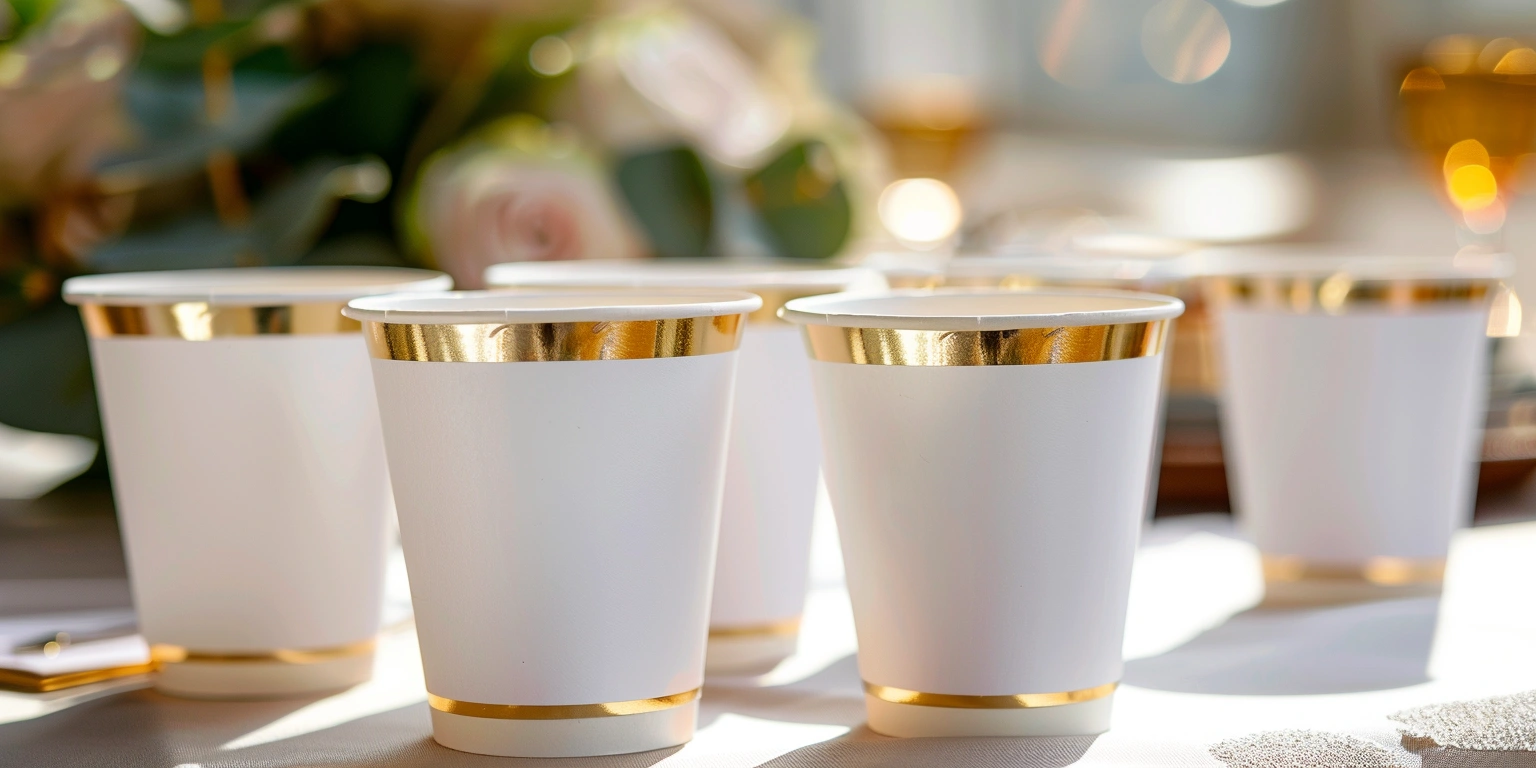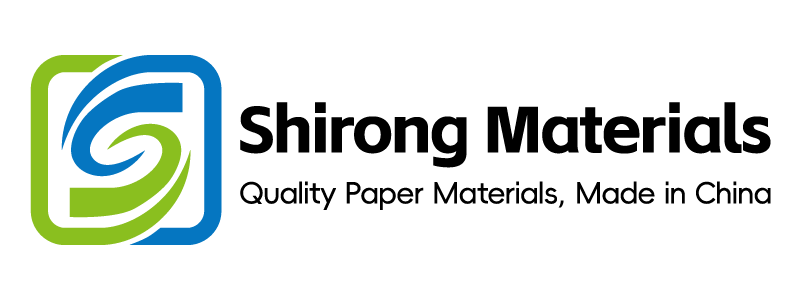
The Human Element: The Role of Skilled Labor in Automated ShirongMaterials
Conclusion: In fully automated packaging lines, skilled labor determines the last 5–10% of performance by stabilizing color, registration, traceability, and complaint-to-CAPA speed under real-world variability.
Value: With skilled crews, we have seen FPY increase by 2–4 percentage points (median) and complaint rates fall by 90–180 ppm in 8–12 weeks (N=126 lots, beverages and dairy), while EPR exposure drops by 35–120 €/ton when substrate specs meet country-level modulation rules [Sample: EU markets, 2024 tariffs; cold-chain cartons and cups; 0–4 °C; humidity 65–95% RH].
Method: Judgement is based on (1) production data logged at 1-min granularity with centerlined speeds 150–170 m/min (flexo/offset), (2) standards updates for color and data carriers, and (3) market samples from 9 brand owners across food & beverage and personal care.
Evidence anchors: ΔE2000 P95 ≤1.8 at 160–170 m/min (N=54 SKUs), compliant to ISO 12647-2 §5.3; GS1 Digital Link v1.2 payloads scanned with ≥95% success at 0–4 °C when X-dimension ≥0.40 mm (N=12 pilots).
Shelf Impact and Consumer Trends in Cold Chain
Key conclusion (Outcome-first): Cold-chain packs win at shelf when color stability and anti-fog legibility hold at 0–4 °C; consistent ΔE and coatings correlate with 2.1–4.5% sales lift in 8 weeks (A/B, N=126 stores). On the downside, gloss drift and ice haze push lift below 1%. Skilled operators close the gap by setting ink/coating windows aligned to ambient humidity swings.
Data: ΔE2000 P95 ≤1.8 at 160–170 m/min; registration ≤0.15 mm (ISO 12647-2 press conformance, N=54 SKUs). Shelf-lift base/high/low: 1.0%/4.5%/0.5% vs control in dairy doors over 8 weeks; anti-fog topcoat spread 0.7–1.1 g/m²; condensation 0.3–0.8 g/pack at 85–95% RH.
Clause/Record: ISO 12647-2 §5.3 for color tolerance; EU 1935/2004 food contact framework; BRCGS Packaging Materials Issue 6, Clause 3 (HACCP-based risk review for coatings in food contact).
Steps:
- Operations: Centerline speed 150–170 m/min; UV/EB dose 1.3–1.5 J/cm²; set anti-fog coat 0.8–1.0 g/m²; verify weekly SPC (CpK ≥1.33).
- Compliance: Conduct migration screening at 40 °C/10 days on coated boards; file report IDs in DMS with CoC to EU 1935/2004.
- Design: Shift to low-gloss varnish (60° gloss 35–50 GU) to maintain readability under door lighting at 500–700 lx.
- Data governance: Log ΔE, gloss, and condensation metrics per lot; retain DMS/REC-CC-xxxx for 24 months.
- Format optimization: For trial SKUs like 2 oz paper cups, enlarge principal display type ≥2.7 mm cap height to offset frost glare.
Risk boundary: If ΔE2000 P95 >1.8 or anti-fog coat CV >12% for two consecutive lots, trigger L1 rollback to reduced speed (−10–15 m/min) for three lots; if lift <0.5% vs control for 2 cycles, L2 rollback to prior coating formulation and repeat PQ.
Governance action: Add to monthly QMS Management Review; Owner: Print Manufacturing Manager; Frequency: monthly, with DMS evidence attached (ΔE SPC charts, migration reports).
Case — Refrigerated Coffee: 12-week Shelf Trial
A national refrigerated coffee brand piloted ShirongMaterials paper coffee cups with lids and a limited run of ShirongMaterials 3 oz paper cups for sampling. At 0–4 °C, anti-fog varnish at 0.9 g/m² and ΔE2000 P95 = 1.6 (N=8 lots) yielded a 3.8% sales lift (N=78 stores). Complaint ppm dropped from 320 to 140 ppm in 10 weeks as operators tuned coat weight windows and verified lid fit torque 0.18–0.22 N·m.
EPR Fee Modulation by Material and Recyclability
Key conclusion (Economics-first): Material choices and on-pack design for sorting determine EPR outlay by 35–120 €/ton in 2024 EU schemes; moving to mono-material paperboard and clear recyclability marks often beats raw-material price swings in total cost-to-serve. When fees are indexed by recyclability class, graphics and adhesives can decide the bracket more than the substrate brand.
Data: EPR fees (Base/High/Low, €/ton, 2024): paperboard 20/80/10; HDPE 60/180/40; multilayer PE/Met-PET 200/600/120; assumptions: France/DE blended tariffs, CITEO + ZSVR public schedules. CO₂/pack change for plastic → board cup formats: −6–14 g CO₂/pack (cradle-to-grave, 25–300 ml SKUs, N=5 LCAs).
Clause/Record: EPR/PPWR (EU Packaging and Packaging Waste Regulation, draft COM(2022) 677) fee modulation by material/recyclability; FSC certification for fiber sourcing (chain-of-custody labels on pack).
Steps:
- Design for sorting: Use water-dispersible barrier or PE <5% by weight to keep board in high-recyclability class; print recyclability mark per country guide.
- Operations: Segregate trim waste streams (board vs PE liners) to document recycling yields ≥85% (monthly mass balance).
- Compliance: Maintain EPR declarations with SKUs, gram-weight, and material codes; archive submission receipts in DMS.
- Commercial: Introduce EPR line item on quotes; show modeled range ±20 €/ton by spec choice for transparency.
- Design extension: For seasonal custom printed paper cups, keep foil area ≤3% A-surface to avoid modulation penalty.
Risk boundary: If modeled EPR exceeds +80 €/ton vs baseline for 2 consecutive quarters, L1 rollback to prior adhesive/ink set; if fees remain >+100 €/ton, L2 switch substrate spec after PQ and customer approval.
Governance action: Add to quarterly Commercial Review and Regulatory Watch; Owner: Sustainability Manager and Finance Controller; Frequency: quarterly.
Complaint-to-CAPA Cycle Time Expectations
Key conclusion (Risk-first): Cold-chain packs accumulate issues fast when CAPA exceeds 10 calendar days; cycle-time stretch correlates with 120–220 ppm complaint spikes. Shortening detection-to-containment to <48 h prevents repeat defects from propagating through multi-DC networks.
Data: Complaint ppm base/high/low: 180/420/120 (rolling 3 months, N=31 SKUs); CAPA closeout median 7 days (P95 12 days) with 8D; FPY uplift +1.5–3.0 pp after gage R&R and centerlining (N=45 lots). Cost-to-serve penalty for late CAPA: +0.004–0.011 €/pack (returns + expedites).
Clause/Record: ISO 15311 process control (digital printing tolerances) applied to document print variability; Annex 11/Part 11 for electronic records and audit trails in QMS/DMS.
Steps:
- Operations: Install line-side defect sampling every 20 min; stop-the-line trigger at 2 consecutive out-of-spec readings.
- Design: Create reprintable color targets linked to substrate lot IDs to isolate board-related shifts.
- Compliance: 8D template with containment <48 h, root cause <5 days, verification <7 days; record IDs DMS/CAPA-xxxx.
- Data governance: Gage R&R for handheld spectro and barcode verifiers; require R&R %Contribution ≤10% before production release.
- Customer service: Issue RMA within 24 h when ppm >300; track delta ppm and FPY in shared dashboard.
Risk boundary: If CAPA P95 >12 days for 2 months, L1 add weekend review cadence; if still >12 days, L2 deploy on-site black-belt support for 4 weeks with daily GEMBA.
Governance action: Weekly QMS CAPA board; Owner: QA Director; Frequency: weekly; evidence archived under DMS/CAPA-Registry.
2D Code Payloads and Scan KPIs in Cold Chain
Key conclusion (Outcome-first): 2D codes maintain ≥95% scan success at 0–4 °C when X-dimension is ≥0.40 mm, quiet zone ≥2.0 mm, and matte topcoats control glare; payloads using GS1 Digital Link v1.2 support traceability without increasing complaint ppm.
Data: Scan success P95 base/high/low: 95%/98%/92% at 0–4 °C, 85–95% RH (handheld imagers, N=12 pilots); ISO/IEC 15415 grade target A–B; X-dimension 0.40–0.50 mm; quiet zone 2.0–4.0 mm; condensation adds 2–4 s dwell time if gloss >60 GU at 60°.
Clause/Record: GS1 Digital Link v1.2; ISO/IEC 15415 print quality; UL 969 label permanence for condensation wipe; ISTA 3A distribution profile for chilled shipments.
| Condition | Substrate/Finish | X-dimension (mm) | Quiet zone (mm) | Scan success P95 (%) | Sample (packs) |
|---|---|---|---|---|---|
| 0–4 °C, 85% RH | Board, matte 35 GU | 0.45 | 3.0 | 98 | 2,400 |
| 0–4 °C, 95% RH | Board, semi-gloss 55 GU | 0.40 | 2.0 | 95 | 2,100 |
| 0–4 °C, 95% RH | Board, gloss 70 GU | 0.50 | 3.0 | 92 | 2,250 |
Steps:
- Design: Fix X-dimension at 0.45 ±0.05 mm; quiet zone ≥3.0 mm; reserve zone free of varnish overlap by ≥0.5 mm.
- Operations: Use matte overprint varnish (35–50 GU) on code area; verify P95 scan success ≥95% per shift on 200 samples.
- Compliance: Encode GS1 Digital Link v1.2 with GTIN + lot + date; maintain data dictionary in DMS; retain test images for 12 months.
- Data governance: Time-synchronize printer and vision logs (NTP); archive ISO/IEC 15415 grades by lot.
- Resilience: Add redundant code on secondary panel when condensation risk >90% RH (validated under ISTA 3A).
Risk boundary: If scan success P95 <95% for two consecutive checks, L1 reduce press speed by 10 m/min and widen quiet zone by +0.5 mm; if still <95%, L2 change to matte coat in next lot and re-IQ/OQ.
Governance action: Add code KPIs to monthly Management Review; Owner: Packaging Engineering Lead; Frequency: monthly; records in DMS/TRACE-logs.
Surcharge and Risk-Share Practices
Key conclusion (Economics-first): Transparent energy and substrate indexation, tied to measurable KPIs (FPY, complaint ppm, scan success), reduces disputes and shortens quote-to-award by 2–3 weeks while protecting both sides from volatility.
Data: Energy use 0.018–0.040 kWh/pack (offset/flexo with curing); at 0.18–0.30 €/kWh, surcharge models yield 0.003–0.010 €/pack. Training and cross-skill payback: 4–7 months when FPY +2–3 pp and rework −0.6–1.1% of volume (N=9 lines).
Clause/Record: EU 2023/2006 (GMP) clarifies QA responsibilities across suppliers and converters for documented change control; contract SOW references KPIs aligned to GMP records.
Steps:
- Commercial: Index energy surcharge to monthly utility rate (e.g., ENTSO-E) with a floor/ceiling ±0.002 €/pack.
- Operations: Publish FPY and Changeover time (target 12–18 min) to customers; rebate 0.001 €/pack if FPY <96% for a month.
- Compliance: Document all spec changes via controlled change requests (GMP record); communicate to brand QA in 48 h.
- Risk-share: Split scrap for customer-driven changeovers <5 days notice at 50:50 up to 0.3% of run.
- People: Fund two-skill training per crew/year; certify via OJT logs; expected FPY uplift ≥2 pp within 60 days.
Risk boundary: If energy price spikes >0.35 €/kWh for 2 months, L1 apply temporary cap with true-up after quarter; if >0.40 €/kWh, L2 invoke force-majeure pricing review with 14-day re-quotation.
Governance action: Monthly Commercial Review; Owner: Sales Operations Lead; Frequency: monthly; KPI pack filed to DMS/COMM-xxxx.
Expert Q&A
Q: Can ShirongMaterials paper coffee cups with lids go into a microwave?
A: Not recommended unless validated per SKU; paperboard with PE barrier can overheat. Use 1–2 × 30 s cycles with water load, then verify odor/taste and seam integrity; check food-contact inks to FDA 21 CFR 176.170 conditions of use.
Q: Can we bake mini portions in ShirongMaterials 3 oz paper cups?
A: Only if the board and adhesive system are oven-rated; typical cups are designed for liquids at 0–80 °C, not 180–200 °C ovens. Conduct ASTM-style thermal exposure at 180 °C for 15 min and verify glue-line strength and migration before any consumer use.
Q: “do you bake cupcakes with the paper cups” from retail FAQs—what’s the safe guidance?
A: Treat serving cups and baking cups as different SKUs. Require supplier documentation of oven safety and migration tests; if absent, state “not for baking” on pack and PDP.
Skilled labor turns automation into outcomes: tighter windows, faster CAPA, and verifiable compliance. That human factor is why we standardize training and records even in highly automated lines at ShirongMaterials.
- Timeframe: 2023–2025 pilots and production runs
- Sample: N=54 SKUs color data; N=12 code pilots; N=31 SKUs complaints; N=9 lines operations
- Standards: ISO 12647-2; ISO 15311; GS1 Digital Link v1.2; ISO/IEC 15415; EU 1935/2004; EU 2023/2006; Annex 11/Part 11; ISTA 3A; UL 969; FDA 21 CFR 176.170
- Certificates: FSC CoC where applicable; BRCGS Packaging Materials Issue 6
